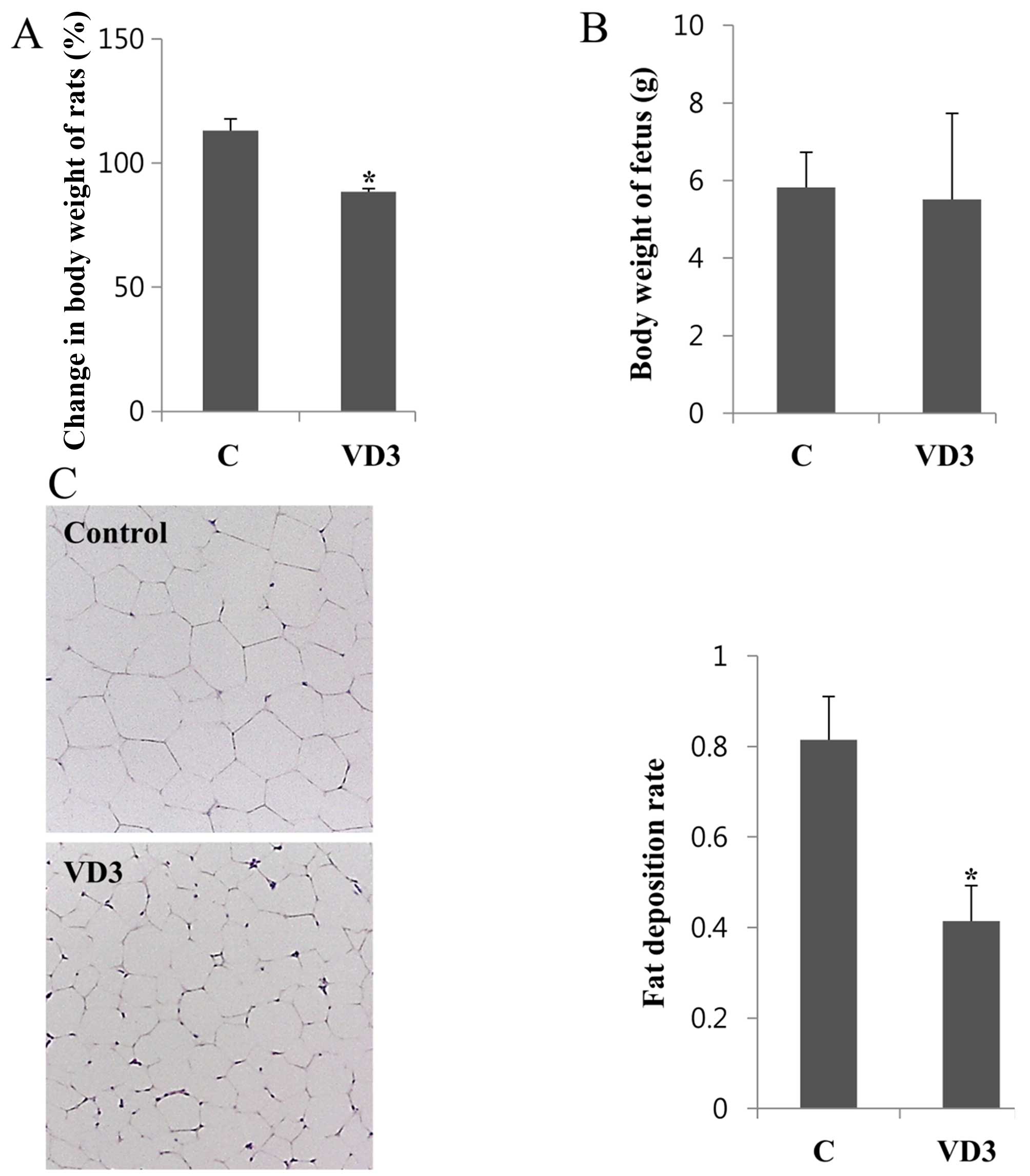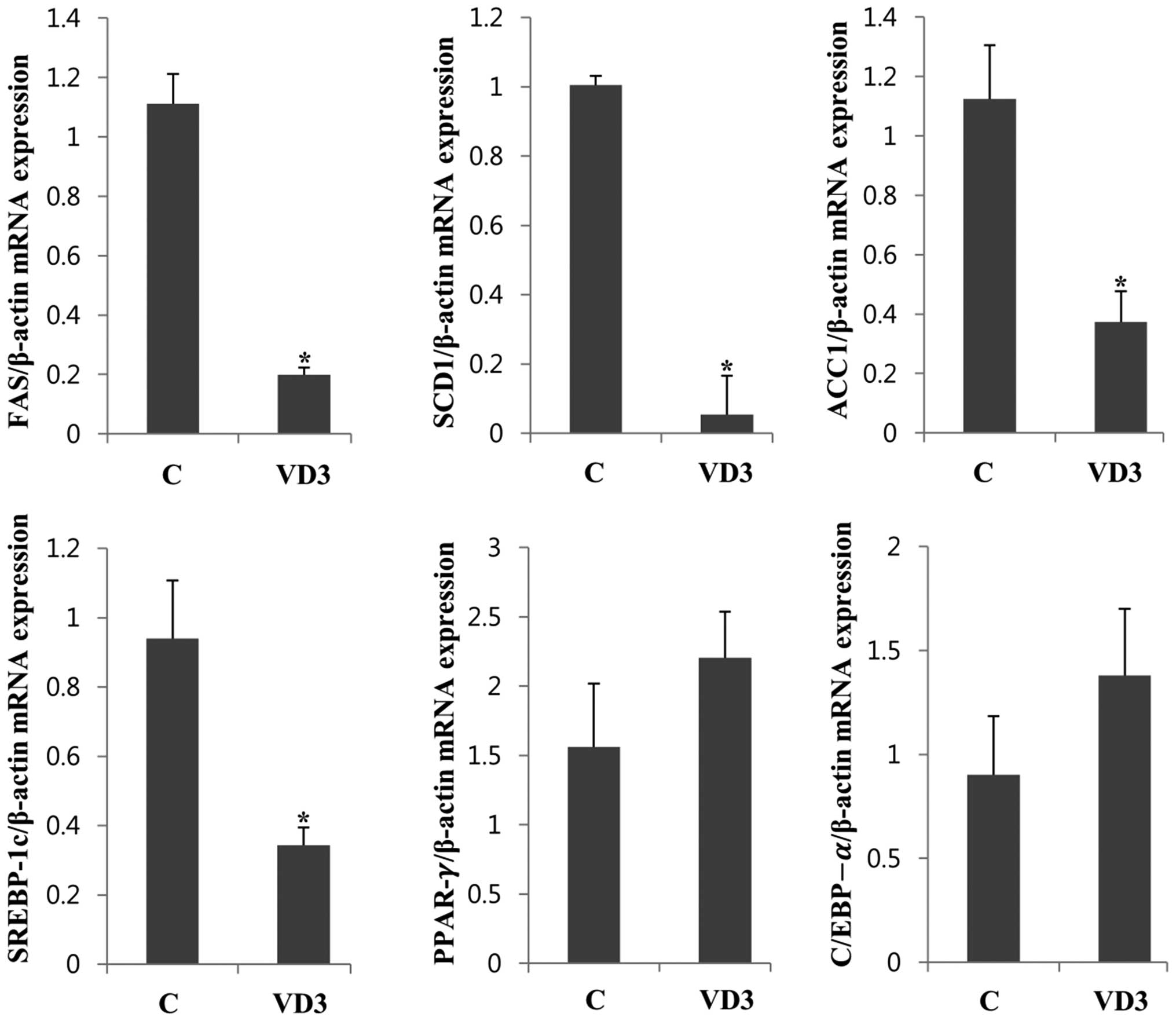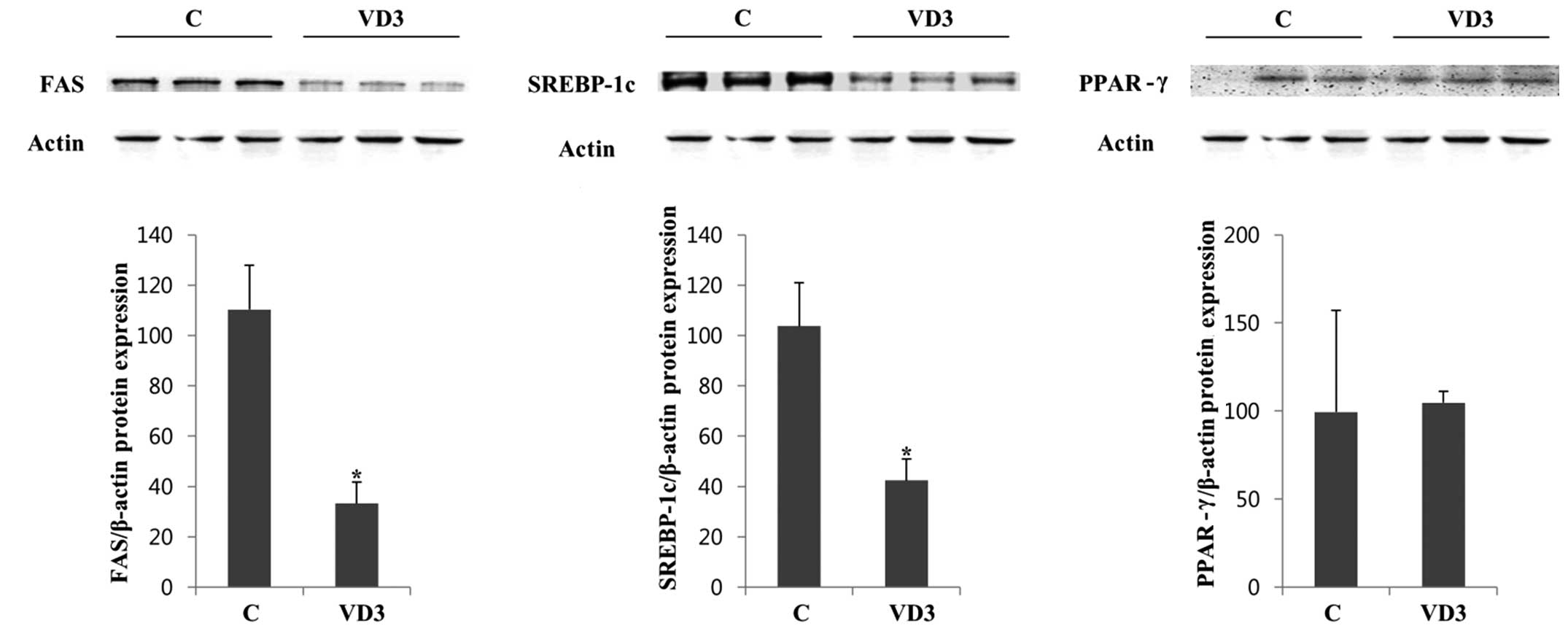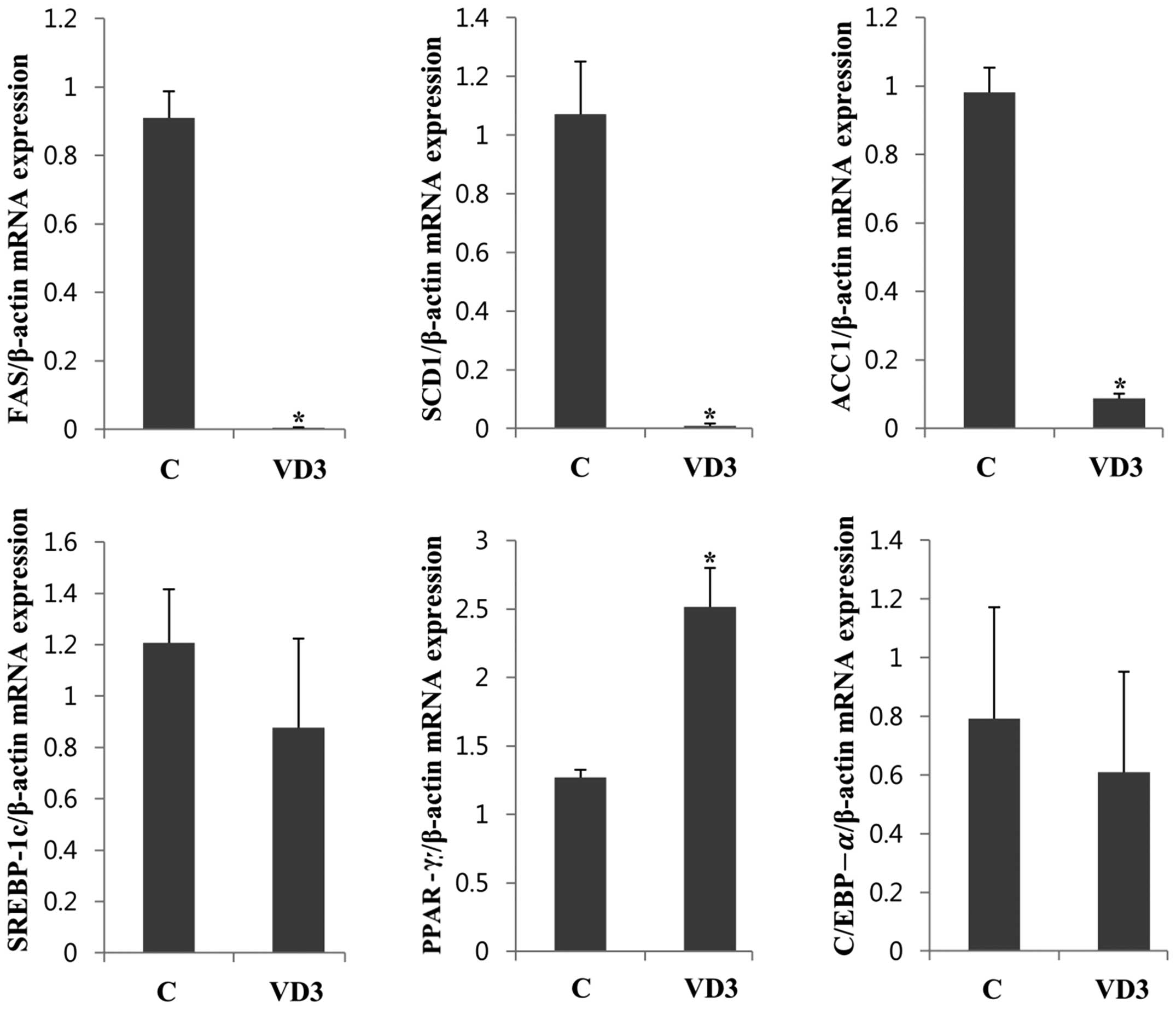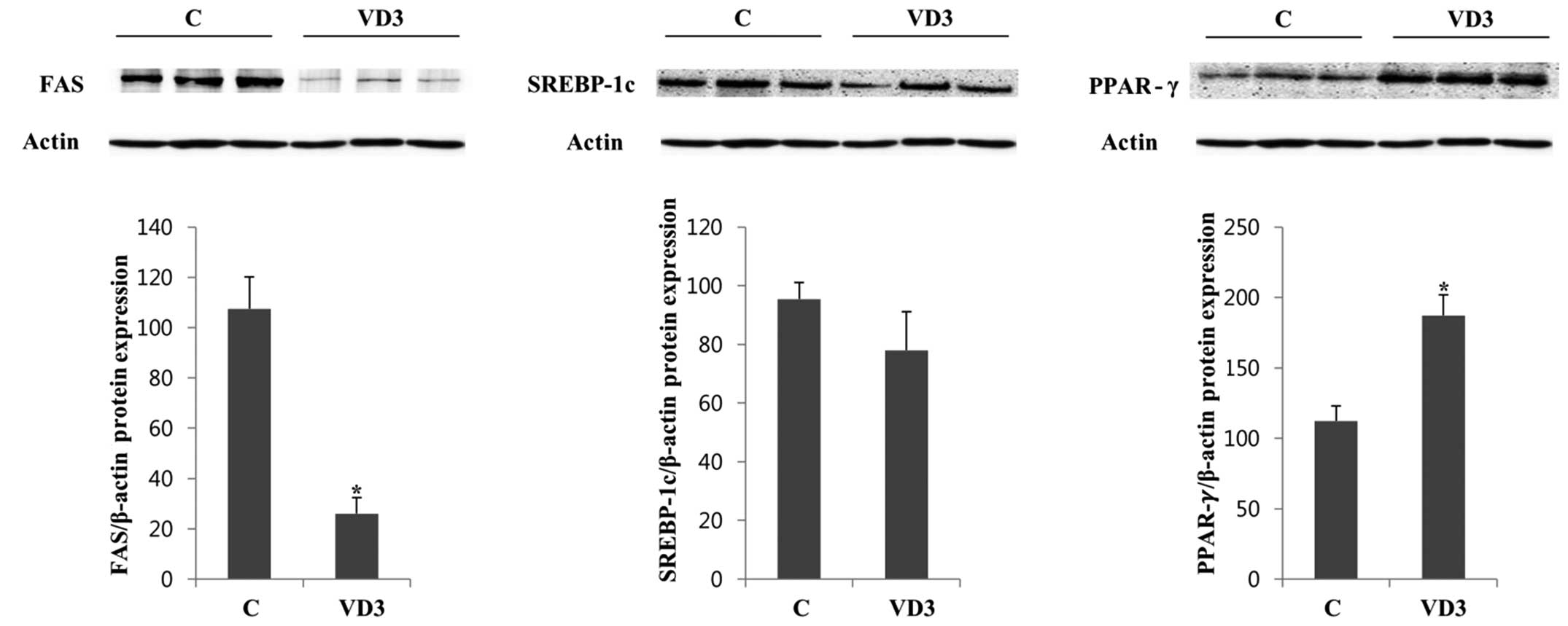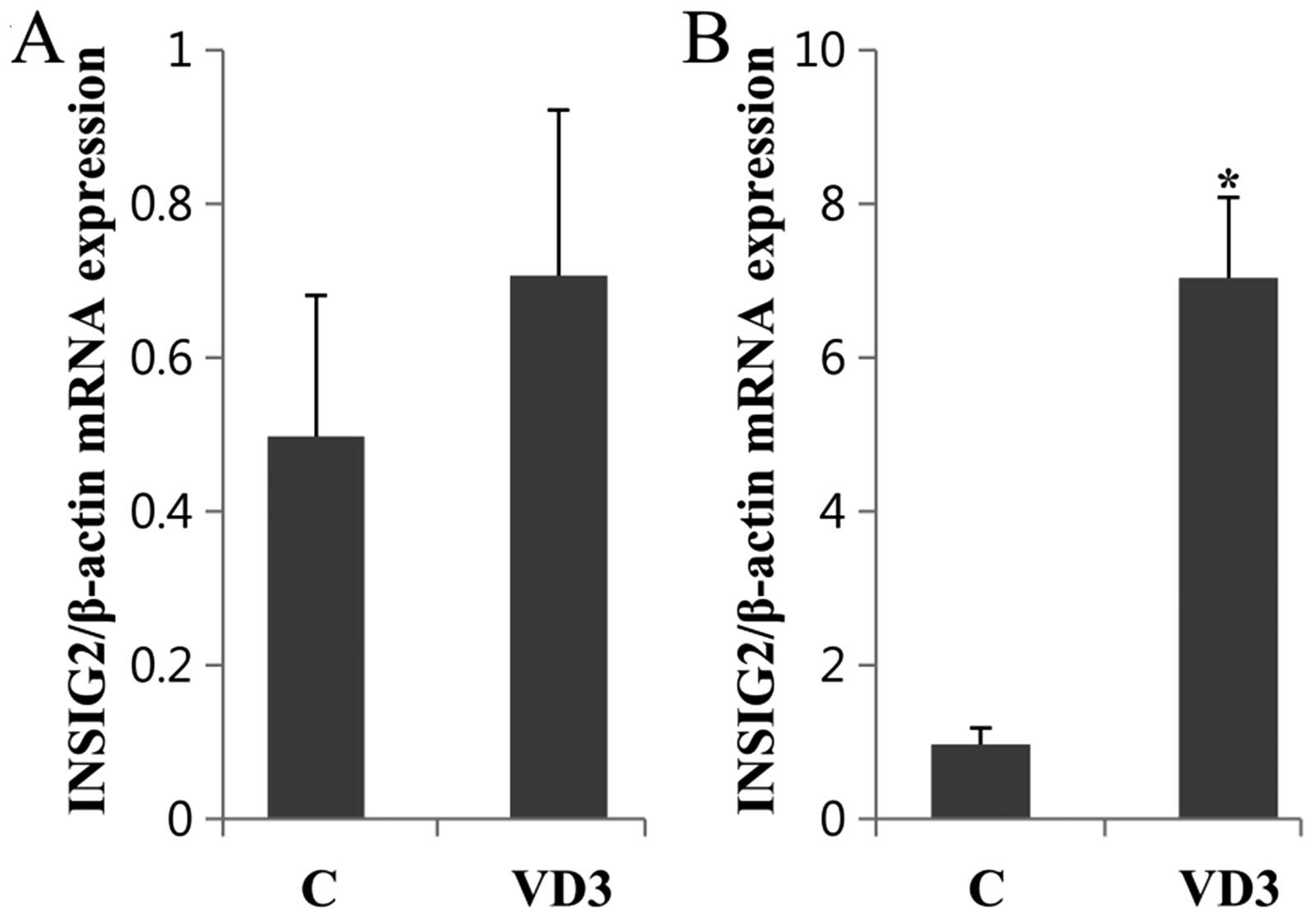|
1
|
Holick MF: McCollum Award Lecture, 1994:
Vitamin D - new horizons for the 21st century. Am J Clin Nutr.
60:619–630. 1994.PubMed/NCBI
|
|
2
|
Loomis WF: Skin-pigment regulation of
vitamin-D biosynthesis in man. Science. 157:501–506. 1967.
View Article : Google Scholar : PubMed/NCBI
|
|
3
|
Bouillon R, Okamura WH and Norman AW:
Structure-function relationships in the vitamin D endocrine system.
Endocr Rev. 16:200–257. 1995.PubMed/NCBI
|
|
4
|
Dusso AS, Thadhani R and Slatopolsky E:
Vitamin D receptor and analogs. Semin Nephrol. 24:10–16. 2004.
View Article : Google Scholar : PubMed/NCBI
|
|
5
|
Carlberg C, Bendik I, Wyss A, Meier E,
Sturzenbecker LJ, Grippo JF and Hunziker W: Two nuclear signalling
pathways for vitamin D. Nature. 361:657–660. 1993. View Article : Google Scholar : PubMed/NCBI
|
|
6
|
Pike JW, Meyer MB and Martowicz ML: New
techniques in transcription research extend our understanding of
the molecular actions of the vitamin D hormone. IBMS BoneKEy.
6:169–180. 2009. View
Article : Google Scholar
|
|
7
|
White JH: Vitamin D signaling, infectious
diseases, and regulation of innate immunity. Infect Immun.
76:3837–3843. 2008. View Article : Google Scholar : PubMed/NCBI
|
|
8
|
Gorham ED, Garland CF, Garland FC, Grant
WB, Mohr SB, Lipkin M, Newmark HL, Giovannucci E, Wei M and Holick
MF: Vitamin D and prevention of colorectal cancer. J Steroid
Biochem Mol Biol. 97:179–194. 2005. View Article : Google Scholar : PubMed/NCBI
|
|
9
|
Giovannucci E, Liu Y, Rimm EB, Hollis BW,
Fuchs CS, Stampfer MJ and Willett WC: Prospective study of
predictors of vitamin D status and cancer incidence and mortality
in men. J Natl Cancer Inst. 98:451–459. 2006. View Article : Google Scholar : PubMed/NCBI
|
|
10
|
Holick MF: Vitamin D deficiency. N Engl J
Med. 357:266–281. 2007. View Article : Google Scholar : PubMed/NCBI
|
|
11
|
Wortsman J, Matsuoka LY, Chen TC, Lu Z and
Holick MF: Decreased bioavailability of vitamin D in obesity. Am J
Clin Nutr. 72:690–693. 2000.PubMed/NCBI
|
|
12
|
Parikh SJ, Edelman M, Uwaifo GI, Freedman
RJ, Semega-Janneh M, Reynolds J and Yanovski JA: The relationship
between obesity and serum 1,25-dihydroxy vitamin D concentrations
in healthy adults. J Clin Endocrinol Metab. 89:1196–1199. 2004.
View Article : Google Scholar : PubMed/NCBI
|
|
13
|
Natarajan R: Vitamin D metabolites inhibit
adipocyte differentiation in 3T3-L1 preadipocytes. Master's thesis.
University of Massachusetts; pp. 1642008
|
|
14
|
Macotela Y, Boucher J, Tran TT and Kahn
CR: Sex and depot differences in adipocyte insulin sensitivity and
glucose metabolism. Diabetes. 58:803–812. 2009. View Article : Google Scholar : PubMed/NCBI
|
|
15
|
Kuhl J, Hilding A, Östenson CG, Grill V,
Efendic S and Båvenholm P: Characterisation of subjects with early
abnormalities of glucose tolerance in the Stockholm Diabetes
Prevention Programme: the impact of sex and type 2 diabetes
heredity. Diabetologia. 48:35–40. 2005. View Article : Google Scholar
|
|
16
|
Catalano PM, Roman-Drago NM, Amini SB and
Sims EA: Longitudinal changes in body composition and energy
balance in lean women with normal and abnormal glucose tolerance
during pregnancy. Am J Obstet Gynecol. 179:156–165. 1998.
View Article : Google Scholar : PubMed/NCBI
|
|
17
|
Rasmussen KM and Yaktine AL: Weight gain
during pregnancy: Reexamining the guidelines. National Academies
Press; 2009
|
|
18
|
Gillman MW, Rifas-Shiman S, Berkey CS,
Field AE and Colditz GA: Maternal gestational diabetes, birth
weight, and adolescent obesity. Pediatrics. 111:e221–e226. 2003.
View Article : Google Scholar : PubMed/NCBI
|
|
19
|
Parsons TJ, Power C, Logan S and
Summerbell CD: Childhood predictors of adult obesity: a systematic
review. Int J Obes Relat Metab Disord. 23(Suppl 8): S1–S107.
1999.
|
|
20
|
Rogers I; EURO-BLCS Study Group: The
influence of birthweight and intrauterine environment on adiposity
and fat distribution in later life. Int J Obes Relat Metab Disord.
27:755–777. 2003. View Article : Google Scholar : PubMed/NCBI
|
|
21
|
Chu SY, Callaghan WM, Kim SY, Schmid CH,
Lau J, England LJ and Dietz PM: Maternal obesity and risk of
gestational diabetes mellitus. Diabetes Care. 30:2070–2076. 2007.
View Article : Google Scholar : PubMed/NCBI
|
|
22
|
O'Brien TE, Ray JG and Chan WS: Maternal
body mass index and the risk of preeclampsia: a systematic
overview. Epidemiology. 14:368–374. 2003. View Article : Google Scholar : PubMed/NCBI
|
|
23
|
Chu SY, Kim SY, Schmid CH, Dietz PM,
Callaghan WM, Lau J and Curtis KM: Maternal obesity and risk of
cesarean delivery: a meta-analysis. Obes Rev. 8:385–394. 2007.
View Article : Google Scholar : PubMed/NCBI
|
|
24
|
Haddow JE, Neveux LM, Palomaki GE,
Lambert-Messerlian G, Canick JA, Grenache DG and Lu J: The
relationship between PTH and 25-hydroxy vitamin D early in
pregnancy. Clin Endocrinol (Oxf). 75:309–314. 2011. View Article : Google Scholar
|
|
25
|
Ginde AA, Sullivan AF, Mansbach JM and
Camargo CA Jr: Vitamin D insufficiency in pregnant and nonpregnant
women of childbearing age in the United States. Am J Obstet
Gynecol. 202:436.e1–8. 2010. View Article : Google Scholar
|
|
26
|
Haagsman H, De Haas C, Geelen M and Van
Golde L: Regulation of triacylglycerol synthesis in the liver.
Modulation of diacylglycerol acyltransferase activity in vitro. J
Biol Chem. 257:10593–10598. 1982.PubMed/NCBI
|
|
27
|
Lenhard JM: Lipogenic enzymes as
therapeutic targets for obesity and diabetes. Curr Pharm Des.
17:325–331. 2011. View Article : Google Scholar : PubMed/NCBI
|
|
28
|
Farmer SR: Transcriptional control of
adipocyte formation. Cell Metab. 4:263–273. 2006. View Article : Google Scholar : PubMed/NCBI
|
|
29
|
Wagner CL and Greer FR; American Academy
of Pediatrics Section on Breastfeeding; American Academy of
Pediatrics Committee on Nutrition: Prevention of rickets and
vitamin D deficiency in infants, children, and adolescents.
Pediatrics. 122:1142–1152. 2008. View Article : Google Scholar : PubMed/NCBI
|
|
30
|
Nesby-O'Dell S, Scanlon KS, Cogswell ME,
Gillespie C, Hollis BW, Looker AC, Allen C, Doughertly C, Gunter EW
and Bowman BA: Hypovitaminosis D prevalence and determinants among
African American and white women of reproductive age: third
National Health and Nutrition Examination Survey, 1988–1994. Am J
Clin Nutr. 76:187–192. 2002.PubMed/NCBI
|
|
31
|
Blumberg JM, Tzameli I, Astapova I, Lam
FS, Flier JS and Hollenberg AN: Complex role of the vitamin D
receptor and its ligand in adipogenesis in 3T3-L1 cells. J Biol
Chem. 281:11205–11213. 2006. View Article : Google Scholar : PubMed/NCBI
|
|
32
|
Lee S, Lee D-K, Choi E and Lee JW:
Identification of a functional vitamin D response element in the
murine Insig-2 promoter and its potential role in the
differentiation of 3T3-L1 preadipocytes. Mol Endocrinol.
19:399–408. 2005. View Article : Google Scholar
|
|
33
|
Yin Y, Yu Z, Xia M, Luo X, Lu X and Ling
W: Vitamin D attenuates high fat diet-induced hepatic steatosis in
rats by modulating lipid metabolism. Eur J Clin Invest.
42:1189–1196. 2012. View Article : Google Scholar : PubMed/NCBI
|
|
34
|
D'Eon TM, Souza SC, Aronovitz M, Obin MS,
Fried SK and Greenberg AS: Estrogen regulation of adiposity and
fuel partitioning. Evidence of genomic and non-genomic regulation
of lipogenic and oxidative pathways. J Biol Chem. 280:35983–35991.
2005. View Article : Google Scholar : PubMed/NCBI
|
|
35
|
Ferré P and Foufelle F: Hepatic steatosis:
a role for de novo lipogenesis and the transcription factor
SREBP-1c. Diabetes Obes Metab. 12(Suppl 2): 83–92. 2010. View Article : Google Scholar : PubMed/NCBI
|
|
36
|
Brun RP, Kim JB, Hu E and Spiegelman BM:
Peroxisome proliferator-activated receptor gamma and the control of
adipogenesis. Curr Opin Lipidol. 8:212–218. 1997. View Article : Google Scholar : PubMed/NCBI
|
|
37
|
Horton JD, Shimomura I, Brown MS, Hammer
RE, Goldstein JL and Shimano H: Activation of cholesterol synthesis
in preference to fatty acid synthesis in liver and adipose tissue
of transgenic mice overproducing sterol regulatory element-binding
protein-2. J Clin Invest. 101:2331–2339. 1998. View Article : Google Scholar : PubMed/NCBI
|
|
38
|
Shimano H, Horton JD, Shimomura I, Hammer
RE, Brown MS and Goldstein JL: Isoform 1c of sterol regulatory
element binding protein is less active than isoform 1a in livers of
transgenic mice and in cultured cells. J Clin Invest. 99:846–854.
1997. View Article : Google Scholar : PubMed/NCBI
|
|
39
|
Kong J and Li YC: Molecular mechanism of
1,25-dihydroxyvitamin D3 inhibition of adipogenesis in 3T3-L1
cells. Am J Physiol Endocrinol Metab. 290:E916–E924. 2006.
View Article : Google Scholar
|
|
40
|
König B, Koch A, Spielmann J, Hilgenfeld
C, Hirche F, Stangl GI and Eder K: Activation of PPARalpha and
PPARgamma reduces triacylglycerol synthesis in rat hepatoma cells
by reduction of nuclear SREBP-1. Eur J Pharmacol. 605:23–30. 2009.
View Article : Google Scholar : PubMed/NCBI
|
|
41
|
Castro LC and Avina RL: Maternal obesity
and pregnancy outcomes. Curr Opin Obstet Gynecol. 14:601–606. 2002.
View Article : Google Scholar : PubMed/NCBI
|
|
42
|
Sui Z and Dodd JM: Exercise in obese
pregnant women: positive impacts and current perceptions. Int J
Womens Health. 5:389–398. 2013. View Article : Google Scholar : PubMed/NCBI
|
|
43
|
Sharara HA, Rhaman LNA, Ummunnisa F,
Aboubaker N, Abdullah MM and Shaikh N: Obese nulliparous women and
the risk for maternal and fetal complications. Open J Obstet
Gynecol. 4:239–242. 2014. View Article : Google Scholar
|















